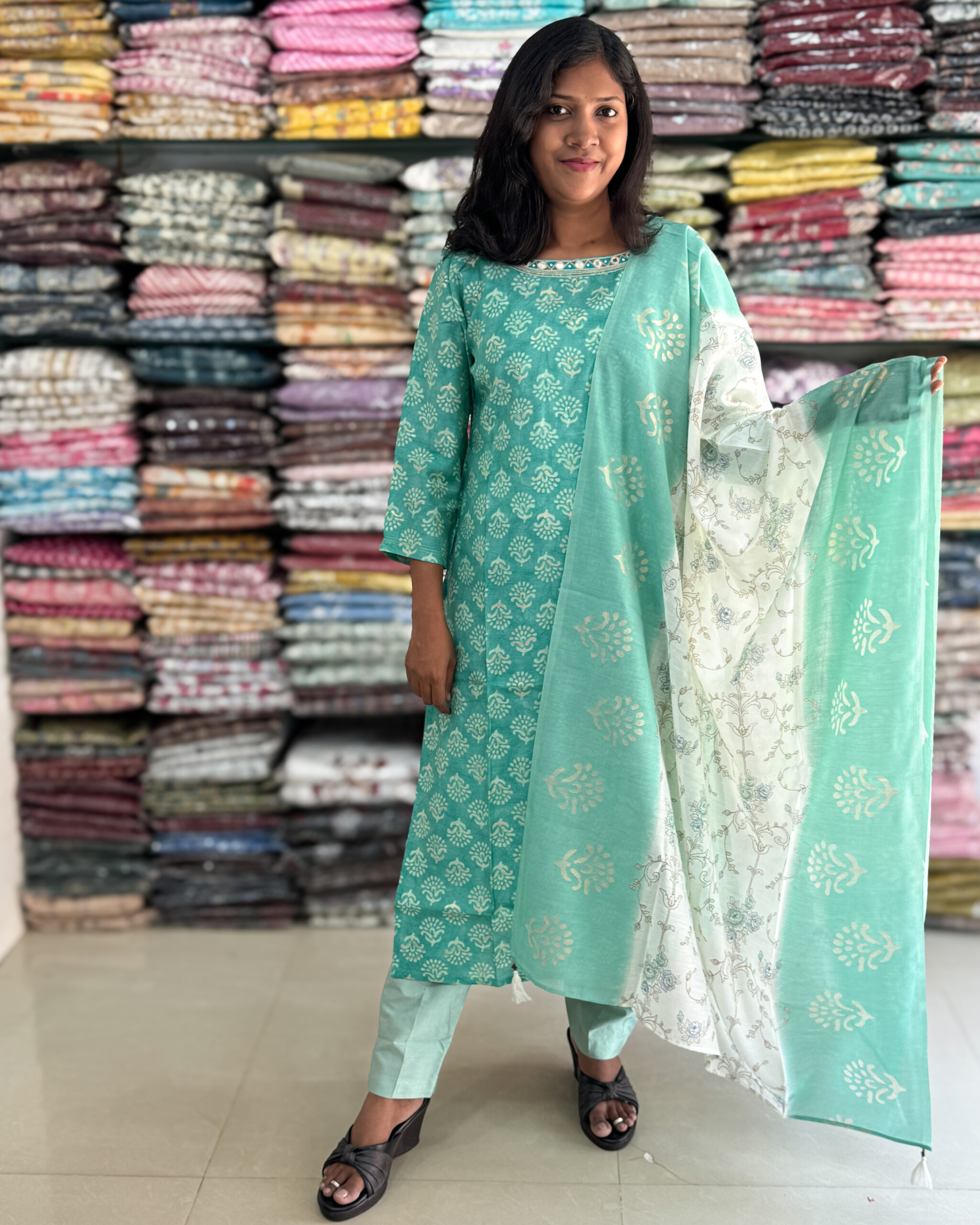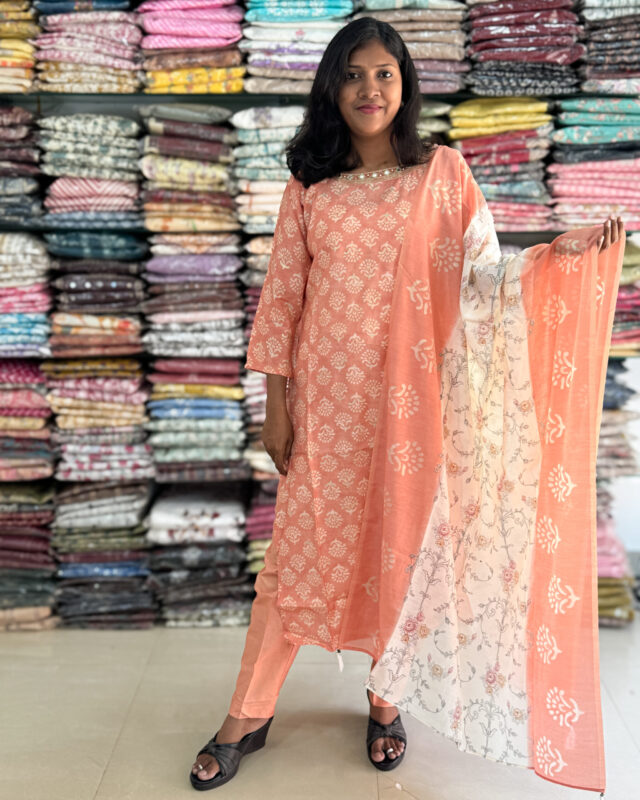Charming Muslin Salwar Suit

Charming Muslin Salwar Suit :
One cotton fabric that was once considered a high-end tissue was muslin. Despite its name, the textile most likely originated in ancient India, even though it is commonly believed to have originated in the Iraqi city of Mosul. Jamdani, an early variety of muslin, was frequently modeled and vividly colored when it was nearly pure and light. The finest muslin grades are fine and smooth in structure, consisting of evenly spun chaffs and fabrics or fillings. The finish is printed or patterned, soft, bleached, or piece-colored. The coarser yarn types and textures are sometimes uneven, bleached, unbleached, or piece teased on the loom, and they are typically finished with sizing.
Glorious Muslin Salwar Suit | Blue | DD0183
By using book, mull, swiss, and book titles, one may identify muslin grades. The handwoven threads of Indian muslin in the past were incredibly delicate. Originally brought to Europe from India in the seventeenth century, they were subsequently made in Scotland and England.
The History of Muslin :
India has long been known for its textiles on a global scale. Muslin is one such famous fabric that is mainly produced in Orissa and Bengal. However, the muslin from Dhaka was of the best caliber.
The use of muslin is widely known throughout history. Bengali Nawabs frequently used Muslin. The first Nawab of Bengal, Murshid Quli Khan, sent muslin to the Mughal emperor. The Emperors wore the Malma Khash and Nawab’s Badsha and Amir, a type of muslin, throughout the summer. The Mughal Empire’s empress Nurjahan was largely responsible for the Muslin’s creation. She selected the Mughal harem of Muslin. Europeans also imported a lot of muslin to make sophisticated shirts, gowns, and children’s clothing. Josephine Bonaparte’s semi-sheer muslin gown is well-known for her paintings.
About the time that muslin manufacturing began in India, though this is uncertain. Nonetheless, he describes a type of cloth in his writings that is strikingly similar to modern Muslims. Megasthenes was a Greek ambassador and historian who was sent to Chandragupta’s court in the third century BC. A cloth that was as translucent and fragile as a spider web and as foamy as white robes was alluded to in both East and West ancient history, that is, Europe and the Chinese Empire. Muslin’s history has long been considered by historians to be ancient.
In the first century AD, Arab traders imported several substances from India, including Muslin, and crossed the Red Sea to bring them into Ethiopia and Egypt in exchange for rhino horns, ivory, and turtle shells. From that point on, with the help of Greek dealers, Muslin spread throughout Europe, even reaching the Roman Empire. There has also been a history of muslin exports to China and Thailand.
The delicate and refined nature of the yarn required the weavers to have a very high level of skill while creating muslin tissue. Another odd item was the loom used to weave muslin. Muslin was an intricate and proficient craftsman. Depending on the style, 700–1200 yarn counts were used in vintage muslin sarees. The fabric gets thinner and finer the more yarn there is in it. Muslin cloth is widely used in many forms of beauty and as a symbol of regal status.
Muslin fabric :
About 2000 BC, a mummy shroud discovered in Egypt provided the first indication of Indian fine cotton fabric, which is related to muslin. Between the 16th and the 18th centuries, Bengal’s muslin industry was thriving, and Mughal Bengal was the world’s top exporter of muslin at that period. In the 17th and 18th centuries, muslin was brought from Bengal to Europe, where it quickly gained popularity.

Salwar kameez :
The exquisite muslins, silks, velvets, and brocades used to make Mughal women’s apparel served as the model for this type of garment. Turkish, Persian, Lahnda, Urdu, and Pashto are the languages from whence the terms “salwar” and “kameez” originated. The first people to wear long kameez and salwars made of the finest silks and muslins were the Mughals.
Dhaka muslin:
Dhaka muslin :
Known as Dhaka malmal, these Muslims were originally from Dacca and were known by the name Shabnam. The silkiest of all muslins, the fibers from Dhaka shrank rather than swelled and dissolved when bathed in the waters of the Meghna.

